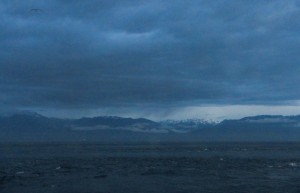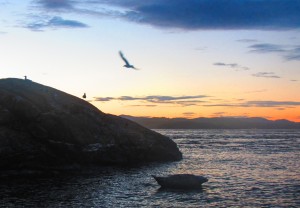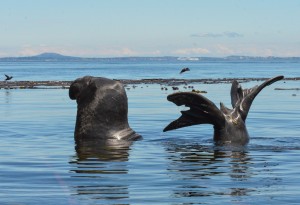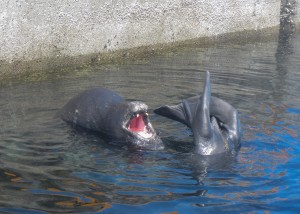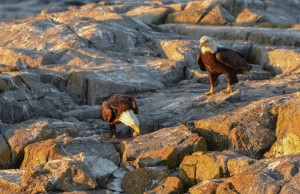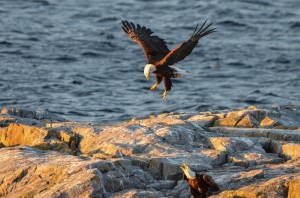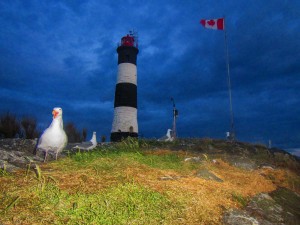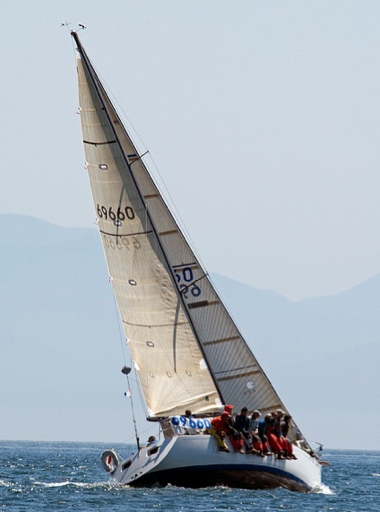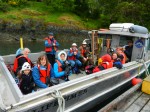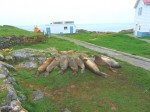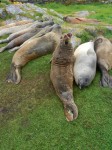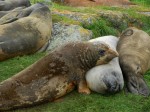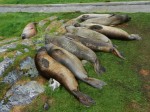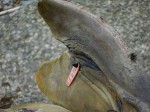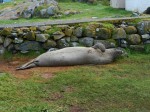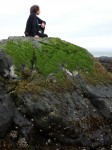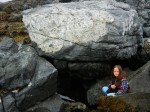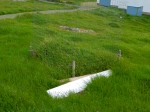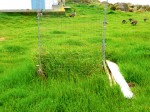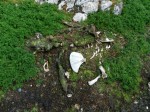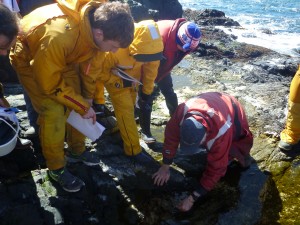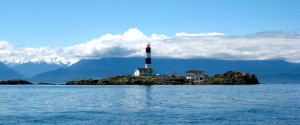On the morning of Wednesday June 6 , I went with Andy MacDonald, the Vancouver Island Region (South) Parks and Protected Areas Section Head, and Zsana Tulcsik, the new BC Parks Area Supervisor from the Goldstream Office out to the Race Rocks Ecological Reserve. ( A report by Garry Fletcher, Race Rocks ER warden)
-
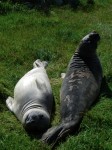
-
Two young elephant seals, probably second year. Note new coat on the left and still shedding on the right.
-
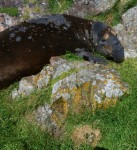
-
Elephant seal male and nearby glaucous -winged gull nest.
-
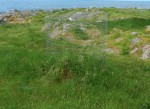
-
Grass enclosure after just over one year. When the Canada geese have not been able to graze, a thick turf builds up.
-
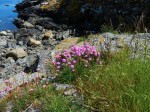
-
Armeria maritima, sea thrift is in full bloom and looks very striking at this time of year.
-
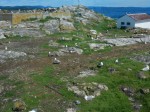
-
The Glaucous-winged gulls are in full nesting mode, with several nests just built and several with eggs and parents incubating.
-
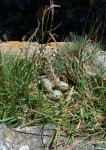
-
Black Oystercatcher nest near docks. It is unusual to be in a grass
-
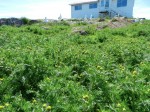
-
Several large areas where the grass was matted and smothered by the sealions hauling out last fall, now have a prolific growth of this newly arrived plant, Matricaria discoidea , or pineappleweed. It is the tallest growing samples of that plant I have seen. Another plant in the same areas is the fiddleneck, Amsinckia menziesii
College staff member Erik Schauff skippered Second Nature and we met Chris Blondeau , Director of Operations for Pearson College UWC on the jetty. He is the relief ecoguardian at Race Rocks for the week .
The elephant seals co-operated and were basking in the sun on the grass in the centre of the island. There were 4- 2 year olds and one large older Male, which may have been Chunk … the inflamed right eye from an injury administered by Misery was a good identification mark.
Two Northern sea lions were observed in the water . I thought it was notable that there were very few harbour seals which usually have pups at this time of year, and none on the southern islets where they usually haul out. I will have to check over the next few days on the tower camera, as they may have been out foraging.
The glaucous-winged gulls are well into nesting season, with several nests containing three eggs. The image from the window of the science centre shows the distribution of pairs. Another picture above shows a nest precariously close to the elephant seal haulout spot.
There was an abundance of pigeon guillemots on all corners of the island where they have their nesting burrows. They should be visible on camera 5 now out near the edge of the cliff to the west. They have certainly been a success story in increasing numbers in the past few years. There must be well over 60 pairs nesting in the hidden burrows under the rocks. Ironically good habitat has been produced in several areas because of human activity in the past by the blasting of rock for the helipad construction by the Coastguard, and other construction on the islands done in the 1900s before it was an ecological reserve. This is a rare example of habitat enhancement that humans can claim, as usually it is the other way around.
On the return to the docks we were impressed with the clumps of Thrift in full bloom. Chris mentioned that the Black Oystercatchers had been in the area on the rock right off the sidewalk by the docks and we soon spotted the nest. This is the same area they have used for many years. The videos of the hatching oystercatchers in this link are from the same area.
In addition to the vast monocultures of pineapple weed as shown above, this is the second year we have noted large patches of Fiddleneck, Amsinckia spectabilis in the same compacted and richly fertilized areas where the grass was killed out by the sealions and intense Canada Goose grazing.

